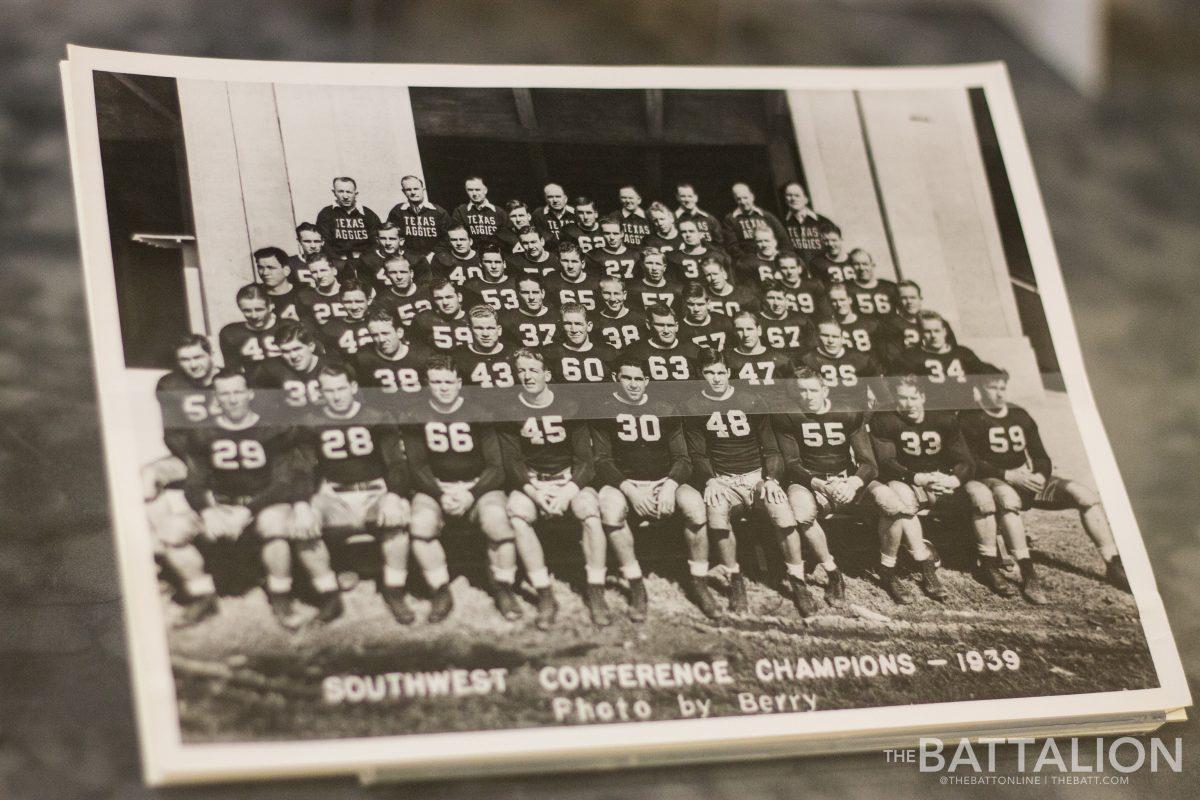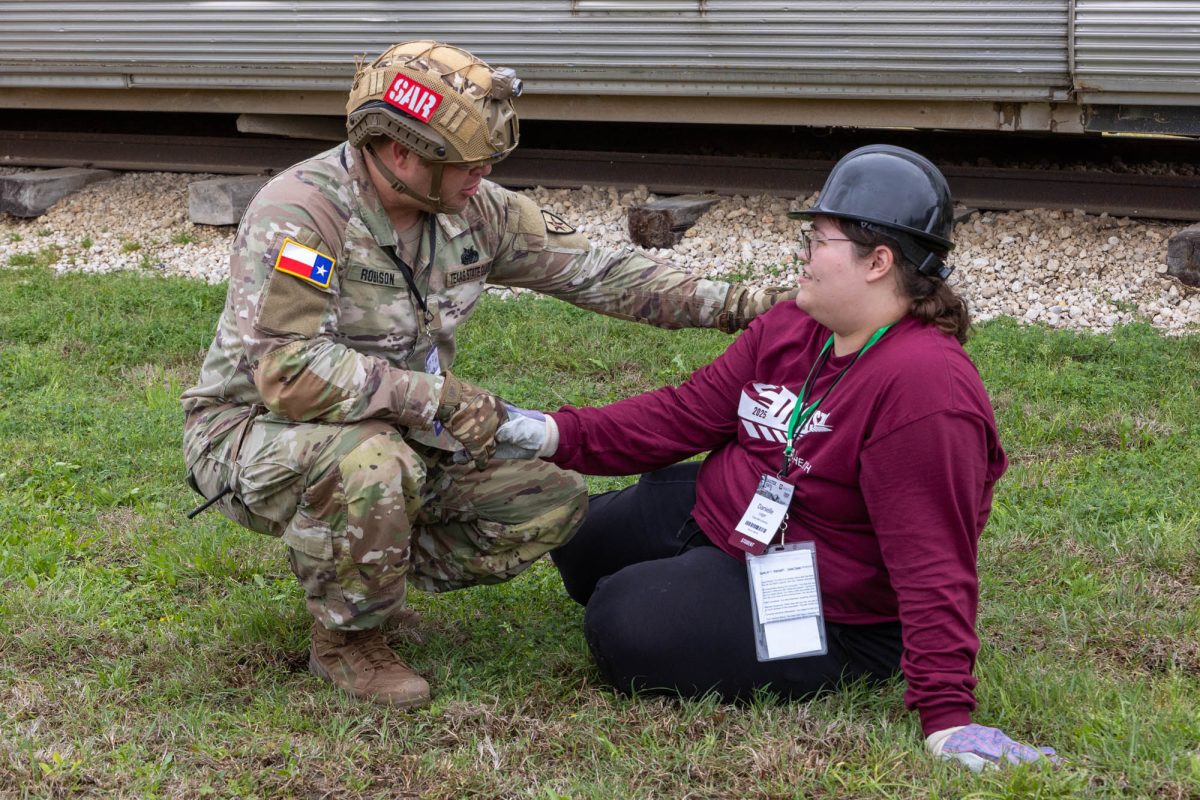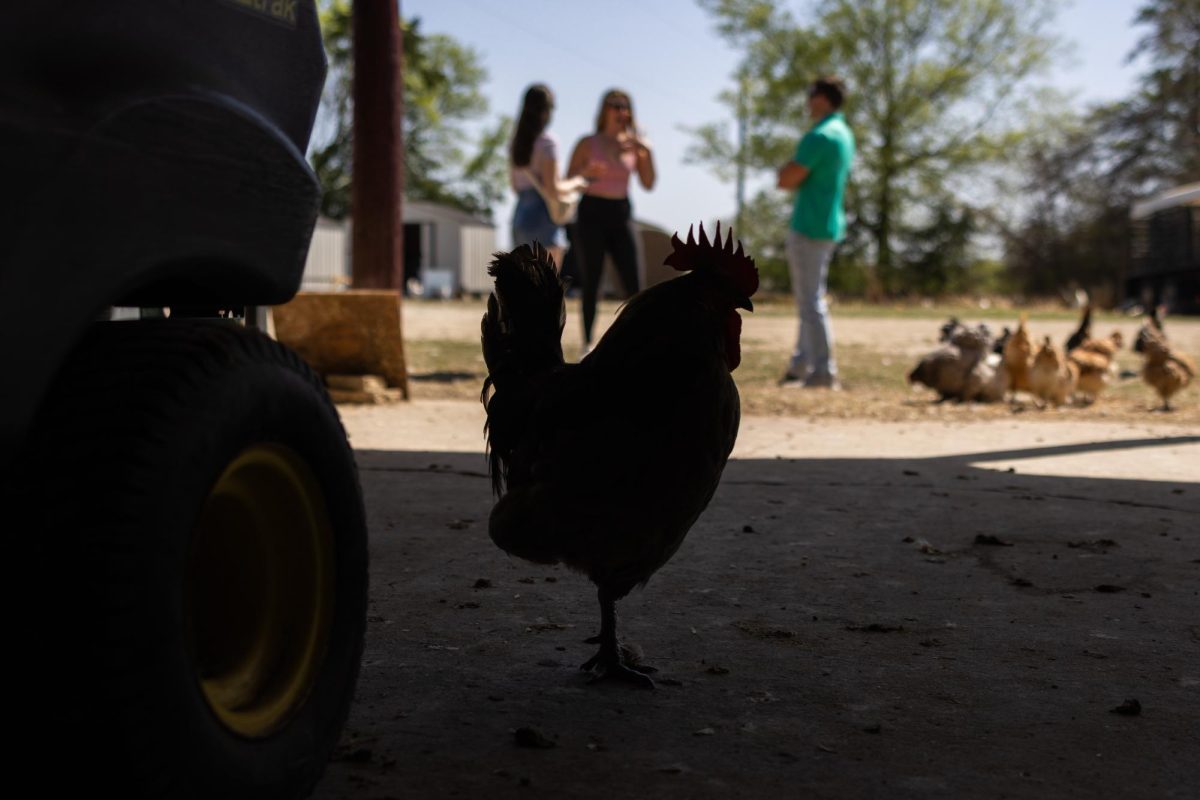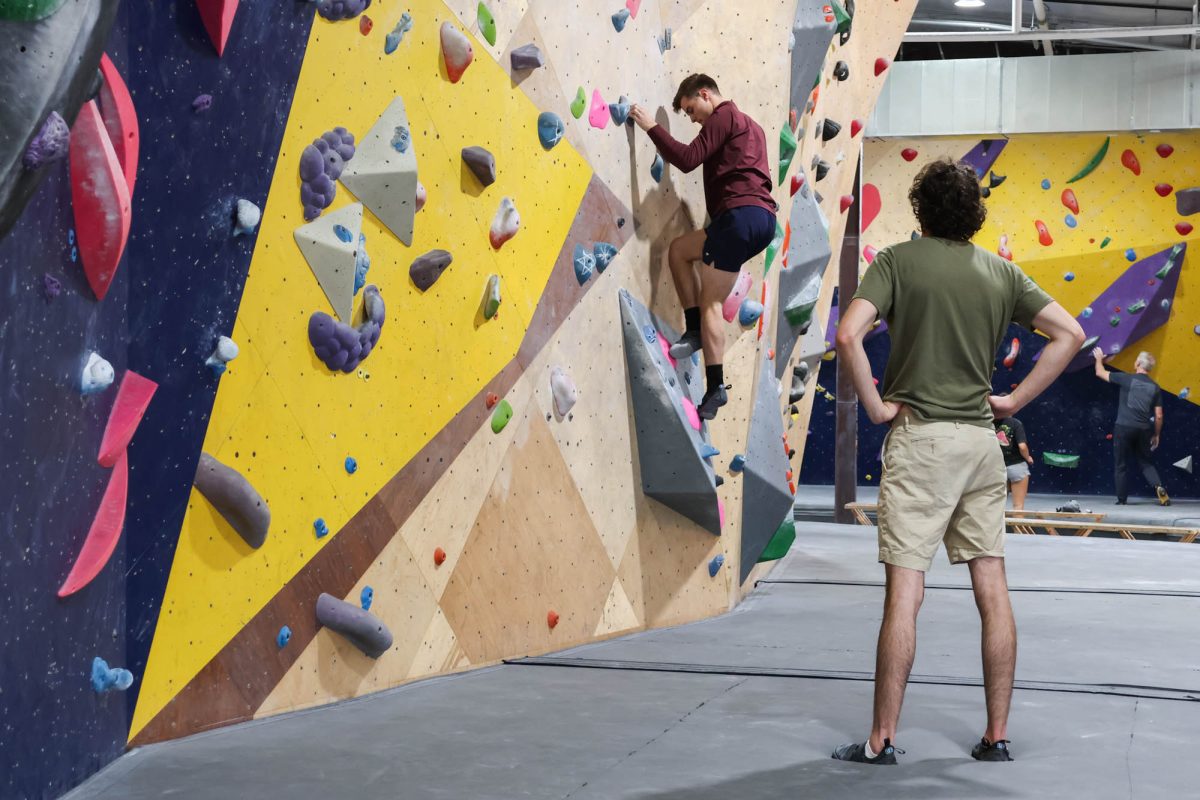Displaying a collection of photographs, building designs and other A&M memorabilia from the 1930s, “A Time of Resolve: Texas A&M During the Great Depression” exhibit is open in Cushing Memorial Library.
The exhibit is free and open to the public until Feb. 22, 2019. Emeritus David Woodcock, a retired A&M architecture professor, was the keynote speaker at the “A Time of Resolve” opening reception on Sept. 7.
Woodcock said he hopes “A Time of Resolve” will inspire individuals to unite despite their differences.
“We’re in a period [where] there are changes and movements and things being said that I think are very troubling,” Woodcock said. “I think one of the things I would hope … is that people will use this exhibition to go back and say how did they deal with those issues and are there lessons to be learned.”
University archivist Greg Bailey discovered the collection while browsing through Cushing’s archives. Within the library’s collections Bailey noticed recurring themes of student life, athletics, agricultural extension and building growth throughout the archives from the 1930s.
“I think it just shows an interesting aspect into a glimpse of the history with some of the difficulties that people went through during that time,” Bailey said. “With the stock market crashing. Making decisions for students whether they were going to go to college or not.”
Though the United States economy suffered greatly during the 1930s, the university was expanding, according to Bailey.
“It was really interesting that this difficulty was going on around the world, but at the same time A&M had this massive growth,” Bailey said. “Many of the buildings were built on campus during the 1930s.”
Samuel Charles Phelps Vosper was an instructor of architecture and chief designer in the College Architect’s office until the mid-1930s. Incorporated in the exhibit are two scanned pieces of Vosper’s hand drawn design of the academic building’s bronze doors.
“I think it is intriguing that we have been able to find one of the original drawings by Mr. Vosper,” Woodcock said. “In the manner of doing drawings in those days, architects would do full-sized drawings, so they would draw the door at one-to-one [ratio].”
“A Time of Resolve” also has multiple keepsakes from A&M’s last perfect football season in 1939, which included the team’s last national championship. The exhibit contains the national champions signed football from the New Year’s Day game.
According to Bailey, a photograph of the 1937 Aggie football team visiting the Grand Canyon is one of his favorite pieces. Traveling back after a game in San Francisco, the team rode mules down the canyon’s steep walls to the Colorado River.
“These students that probably had never been outside the state of Texas [were granted] an opportunity to see some of these very significant places in the United States history,” Bailey said. “I think it’s a good thing to develop culture with you getting outside your comfort levels and going to different areas and seeing different cultures and different places in the United States.”
Even in the 1930s A&M was a global university, according Woodcock. One of the photos in the exhibit is of the Cosmopolitan club, a group of international students from Saudi Arabia, Spain, Mexico and elsewhere.
“The students that were here in the 1929-38 had a lot to think about, in addition to the depression era, A&M had always had this reputation of a global institution,” Woodcock said. “It’s kind of intriguing to think that in the 1930s there was an international club … it must have been extraordinary.”
A Time of Resolve exhibit rediscovers A&M’s history
September 19, 2018
Photo by Photo by Meredith Seaver
Exhibit, A Time of Resolve, is open in the Cushing Memorial Library on the second floor that depicts Texas A&M University during the Great Depression Era.
0
Donate to The Battalion
$2065
$5000
Contributed
Our Goal
Your donation will support the student journalists of Texas A&M University - College Station. Your contribution will allow us to purchase equipment and cover our annual website hosting costs, in addition to paying freelance staffers for their work, travel costs for coverage and more!
More to Discover










